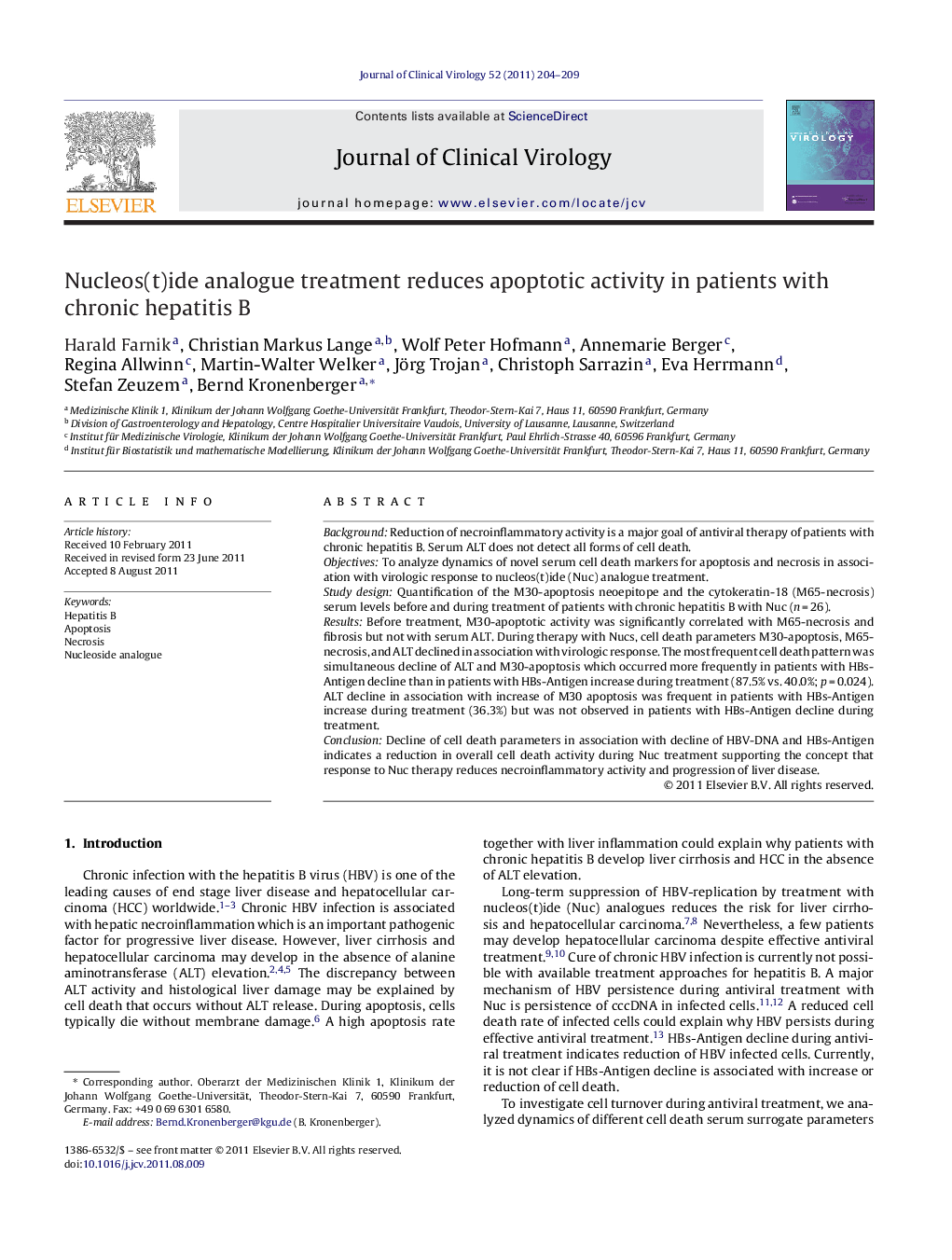| Article ID | Journal | Published Year | Pages | File Type |
|---|---|---|---|---|
| 3369048 | Journal of Clinical Virology | 2011 | 6 Pages |
BackgroundReduction of necroinflammatory activity is a major goal of antiviral therapy of patients with chronic hepatitis B. Serum ALT does not detect all forms of cell death.ObjectivesTo analyze dynamics of novel serum cell death markers for apoptosis and necrosis in association with virologic response to nucleos(t)ide (Nuc) analogue treatment.Study designQuantification of the M30-apoptosis neoepitope and the cytokeratin-18 (M65-necrosis) serum levels before and during treatment of patients with chronic hepatitis B with Nuc (n = 26).ResultsBefore treatment, M30-apoptotic activity was significantly correlated with M65-necrosis and fibrosis but not with serum ALT. During therapy with Nucs, cell death parameters M30-apoptosis, M65-necrosis, and ALT declined in association with virologic response. The most frequent cell death pattern was simultaneous decline of ALT and M30-apoptosis which occurred more frequently in patients with HBs-Antigen decline than in patients with HBs-Antigen increase during treatment (87.5% vs. 40.0%; p = 0.024). ALT decline in association with increase of M30 apoptosis was frequent in patients with HBs-Antigen increase during treatment (36.3%) but was not observed in patients with HBs-Antigen decline during treatment.ConclusionDecline of cell death parameters in association with decline of HBV-DNA and HBs-Antigen indicates a reduction in overall cell death activity during Nuc treatment supporting the concept that response to Nuc therapy reduces necroinflammatory activity and progression of liver disease.
